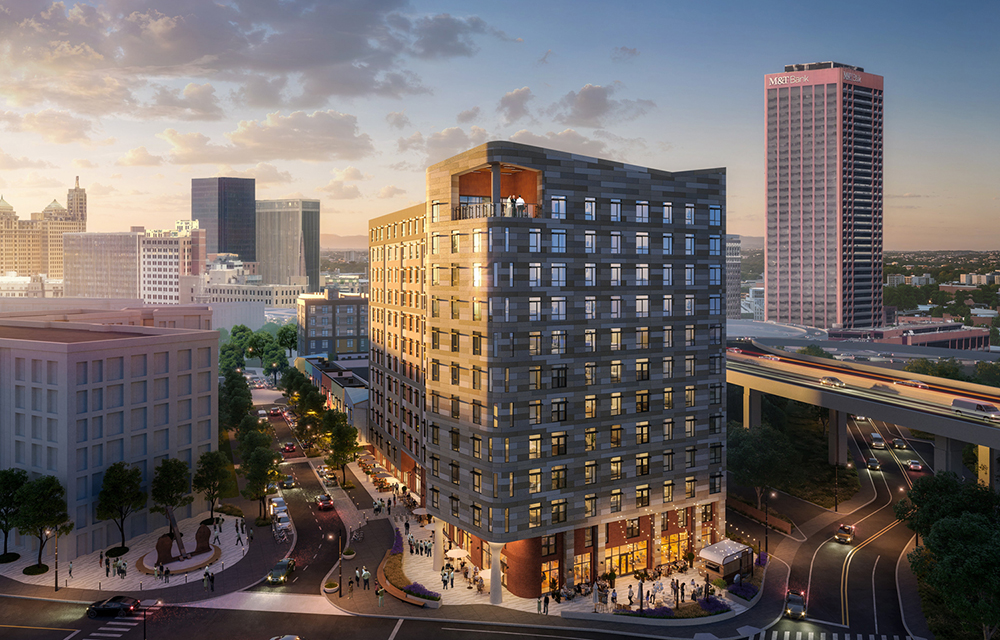News:
Owners Developers & Managers
Posted: January 11, 2010
Real traffic: Automated parking saves space and reduces cost
Traffic engineering in New York City and the tri-state region is a unique and often complicated undertaking. This is often due to the lack of available real estate and the associated value. Add to this the demand for parking that accompanies a residential, commercial or retail development and an owner/developer/operator finds the cost to build parking is a negative carry to their project. In these scenarios, automated parking is sometimes a fitting solution to the space and cost concerns.
The principal is quite simple - instead of a valet or a motorist parking a vehicle, an automated series of motors and pallets does the work. The motorist simply drives his/her vehicle into the equivalent of a one car garage, receives a retrieval ticket and walks away. While the earlier versions of this technology have gained mixed reviews, the next generation has worked out all of the kinks. Sensors ensure vehicle doors, trunks and other parts that can be left open are closed; they also check for people and animals and can be programmed for security sensing as well. Advanced software that operates the system can run based on the parameters preferred by the owner. The system can be programmed to maximize power efficiency, maximize speed of vehicle delivery or a combination of both. Today's overall system provides a reliability, cost effectiveness and efficiency well beyond the versions of the past.
Of most importance to the owner/developer/operator is space and cost. From a space perspective, an automated system can provide a 30% to 50% increase in capacity in the same volume of space as conventional parking. The benefits to this can be significant. One such example is building over bedrock. The excavation costs to provide the necessary parking capacity may be excessive. However, with the introduction of automated parking, excavation may be reduced by 50% or eliminated altogether. However, if excavation was not warranted, then initial (on a short term basis) costs per parking space are more expensive.
Another space benefit is programming and phasing. Since less area is required to develop automated parking, the land footprint or area that would have been needed for parking can now be used for more productive programming space. Depending on the development, this can be extremely valuable. Also, automated parking can be built on an "as needed" basis. In large scale development projects where parking is required, the conventional garage is built immediately even though the parking is not needed until the full project is completed. This can sometimes be years. The negative carry to build such parking is significant. Smaller automated facilities can be built as needed (or phased in) saving valuable capital and interest costs. If excavation is not necessary but a portion of a building was to be devoted to parking, 30% to 50% of this space may be given back as additional program space.
On a long term basis, according to a study performed by provider WPS Parking, the costs can be as much as 50% less. There are two major reasons for this. Firstly, the cost to operate the facility is cheaper. A conventional garage, at the very least, will require staff for payment collection and day to day maintenance. In the instance of valet operations, this cost increases significantly. The personnel necessary for an automated system are minimal. It usually consists of one person at a remote site monitoring numerous facilities. The second reason is the cost to maintain the facility. Conventional garages have asphalt, concrete and ramps that all undergo wear from vehicles moving over them and other elements such as salt from winter weather. The automated system is basically all steel and requires less maintenance and exhibits increased longevity.
Besides the key factors of space and cost, there are other benefits. Automated parking can be called a green technology. In conventional systems, vehicles must be turned on to circulate throughout a facility. In the automated scenario, vehicles are turned off when they enter the system, significantly reducing emissions. From a safety standpoint, there are practically no instances of theft or other crimes as people cannot actually enter the system. Conventional garages have theft, robberies and worse. Finally, damage to the vehicle itself - dings, dents, scratches - are eliminated as the only person who handles the vehicle is the motorist who owns it. This minimizes claims against the owner of the facility.
Automated parking has proven itself abroad and is quickly becoming the choice of owners and developers in existing and planned facilities in the U.S. The cost and space savings, coupled with the environmental, safety and claims benefits will likely continue to increase the popularity of these systems.
Erich Arcement, P.E., PTOE, is senior vice president for Sam Schwartz Engineering, New York, N.Y.
MORE FROM Owners Developers & Managers
Habitat, Duvernay + Brooks and Buffalo Municipal Housing close on 254-unit first phase redev. of Marine Drive Apts.
Buffalo, NY The Habitat Company has closed on Marine Drive Apartments, officially setting in motion the redevelopment of the historic waterfront site. The project, undertaken by Habitat in partnership with Duvernay +

Columns and Thought Leadership

The CRE content gap: Why owners and brokers need better digital narratives in 2026 - by Kimberly Zar Bloorian
As we head into 2026, one thing is clear: deals aren’t won by who has the best asset; they’re won by who presents it best. Yet many owners, operators, and brokers are entering the new year with outdated photos, inconsistent branding, and limited digital presence. This

Strategies for turning around COVID-distressed properties - by Carmelo Milio
Due to the ongoing pandemic, many landlords are faced with an increasing number of distressed properties. The dramatic increase in unemployment and reduction in income for so many has led to a mass exodus out of Manhattan, an increase in the number of empty rental units







.gif)


.jpg)
.gif)